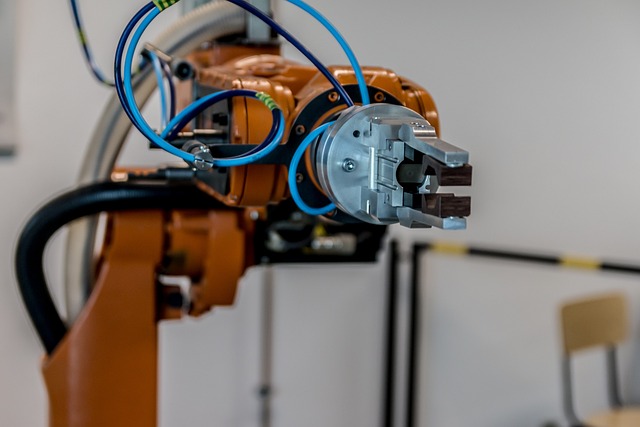The Rise of Trading Bots: Revolutionizing the Financial Landscape
In recent years, the financial markets have witnessed a profound transformation, spearheaded by technological advances that have revolutionized trading strategies. Among the most impactful innovations are trading bots, which automate the buying and selling of financial instruments based on predetermined criteria. This article delves into the advent of trading bots, their functionalities, advantages and disadvantages, and their implications for the future of trading.

Understanding Trading Bots: What They Are and How They Work
Trading bots, also known as algorithmic trading systems, are programs that execute trades on behalf of investors. These bots can analyze the market, identify trading signals, and execute trades automatically, all within milliseconds. The reliance on algorithms allows for a high degree of efficiency and accuracy that human traders often cannot match.
The Mechanics Behind Trading Bots
At their core, trading bots rely on complex algorithms that integrate various data points, including:
- Market trends
- Historical price movements
- Volume data
- Technical indicators
- News and sentiment analysis
Once these bots identify patterns that suggest a potential price movement, they can make decisions based on pre-set trading strategies. Typical strategies include mean reversion, trend-following, arbitrage, and market making.
Types of Trading Bots
There are various types of trading bots available for different trading strategies:
- Market Making Bots: These bots provide liquidity to the market by placing both buy and sell orders, profiting from the spread between the two.
- Trend Following Bots: These bots identify and follow price trends, executing trades in the direction of the trend.
- Arbitrage Bots: These bots exploit price discrepancies between different exchanges or trading pairs.
- News-Based Bots: These bots analyze news events and market sentiment to make trades based on expected price movements.
The Advantages of Using Trading Bots
As trading bots grow in popularity among traders of all levels, there are several notable advantages that contribute to their widespread adoption:
1. Increased Efficiency and Speed
One of the most significant advantages of trading bots is their ability to execute trades at lightning speed. In the high-paced world of financial trading, delays of mere seconds can lead to missed opportunities. Bots can react to market changes almost instantaneously, filling orders promptly and efficiently.
2. Emotionless Trading
Trading can often be an emotional endeavor, influencing decision-making processes and leading to irrational choices. Trading bots mitigate this risk by adhering strictly to algorithms devoid of human emotions. This objectivity can enhance trading discipline and consistency.
3. Backtesting and Optimization
Traders can utilize historical data to backtest their strategies. This means traders can refine their algorithms, optimizing their performance before applying them in actual market conditions. This iterative improvement can lead to more effective trading strategies.
4. 24/7 Trading Capability
While traditional traders can only operate during specified market hours, trading bots can function around the clock. This continuous operation allows traders to capitalize on global market opportunities, including overnight moves and international markets.
The Drawbacks of Trading Bots
Despite their numerous advantages, trading bots are not without their challenges. Here are some drawbacks to consider:
1. Over-Optimizing Strategies
While backtesting is beneficial, there is a risk of over-optimizing strategies to fit historical data. Such strategies may fail in live market conditions if they are too finely tuned, leading to disappointing performance and losses.
2. Lack of Flexibility
Markets can be unpredictable and can change rapidly due to various factors, including economic news or geopolitical events. Trading bots might struggle to adapt to certain unforeseen circumstances that require human judgment or intervention.
3. Technical Failures
As with any technology, there is always a risk of system failures. A server outage, a bug in the code, or a misalignment in data feeds can lead to substantial losses. Relying entirely on bots without monitoring can be hazardous.
4. Dependence on Market Conditions
Trading bots are often reliant on specific market conditions to perform well. During volatile markets, their effectiveness can diminish if the algorithms are not designed to handle such conditions, leading to unexpected losses.

Choosing the Right Trading Bot: Factors to Consider
The market overflow of trading bots can be overwhelming. Here are some essential considerations to make when selecting a trading bot:
1. Reputation and Reviews
Researching the reputation of a trading bot is critical. Look for user reviews and testimonials to gauge the bot's effectiveness and reliability. Trusted forums, community feedback, and expert evaluations can assist in this endeavor.
2. Customization and Flexibility
A good trading bot should allow users to customize their trading algorithms. This level of flexibility enables traders to tailor the bot to their risk tolerance and market strategies.
3. Supported Exchanges
Ensure that the trading bot supports the exchanges on which you intend to trade. Compatibility is key to ensuring that you can operate effectively across various platforms and exploit any arbitrage opportunities that may arise.
4. Security Features
Security is paramount when integrating any automated trading tool. Ensure that the bot incorporates robust security measures to protect your financial data and trading capital.
The Future of Trading Bots: Trends and Projections
As we look toward the future, it is evident that trading bots will continue to play a crucial role in shaping the financial landscape.
1. Increased Adoption of Artificial Intelligence
Artificial Intelligence (AI) will inevitably enhance trading bots. As techniques improve, bots will increasingly incorporate machine learning capabilities, allowing them to adapt to changing market conditions in real-time and improve performance through data analysis and pattern recognition.
2. Enhanced Regulation of Automated Trading
With increased popularity comes heightened scrutiny. Regulatory bodies may begin to impose tighter standards governing automated trading to ensure that these technologies operate within fair and transparent frameworks. Traders will need to stay informed of evolving regulations to comply effectively.
3. Rise of Social Trading Bots
Social trading networks that allow users to replicate the trades of successful investors are on the rise. This trend presents an opportunity for trading bots to incorporate social elements, enabling inexperienced traders to leverage the expertise of seasoned professionals.
Concluding Thoughts: Navigating the Trading Bot Landscape
Trading bots serve as a double-edged sword in the financial markets; they embody both opportunity and risk. The decision to incorporate trading bots into one's strategy should be approached with thoughtful consideration and due diligence. While they offer numerous advantages, including increased efficiency and reduced emotional influence, traders must remain vigilant about their limitations and the potential for technology failure. As we continue to navigate this evolving landscape, embracing newfound opportunities and exercising caution will be essential in achieving successful trading outcomes.
In essence, trading bots are not a magic bullet; rather, they serve as tools to complement a well-rounded trading strategy, requiring constant monitoring, adaptation, and ongoing learning.